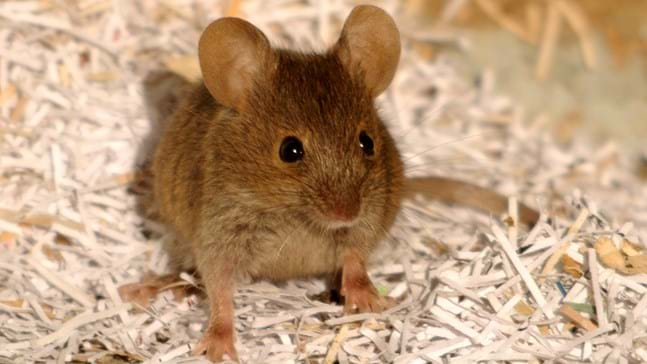Table of Contents
If you’ve ever encountered a mouse in your UK garden or during a stroll, it’s important to distinguish between a house mouse and other species like field mice, voles, and shrews. This guide will help you identify these rodents and provide essential information about their characteristics and behaviours.
Mouse Identification
Are you still uncertain about distinguishing between a house mouse and a field mouse? Identifying mice can be challenging, but with a few simple tips, you’ll become adept at recognizing these tiny creatures.
One crucial difference between a field mouse and a house mouse is their preferred habitat. Field mice, as the name suggests, thrive in outdoor environments like fields, meadows, and gardens. Conversely, house mice are often found indoors, nesting within buildings and homes.
Appearance is another distinguishing factor. Field mice typically exhibit a lighter brown or grey colouration, while house mice tend to sport a darker grey or black hue.
Mice – Distinguishing Features
Mice can be easily distinguished from other small rodents by their prominent features: large eyes, long tails, oversized ears, and pointed snouts.
When it comes to identifying a house mouse versus a field mouse, pay attention to these characteristics:
House mouse (Mus musculus)

The house mouse is smaller in size compared to its field-dwelling counterpart. Measuring around 7-10 cm in length, it sports a light brown or greyish-brown coat. One key feature is its nearly hairless tail, which matches the length of its body but is thicker and scalier than other mouse species. A distinctive attribute of house mice is their strong odour, especially if they share your living space.
In terms of diet, house mice have a varied menu, consuming insects like beetle larvae and caterpillars, carrion, vegetation, berries, nuts, and seeds. If you spot a small, brown-grey mouse with a distinct tail, chances are it’s a house mouse.
Wood mouse/field mouse (Apodemus sylvaticus)

Easily confused with house mice, the wood mouse, also known as the field mouse, boasts a sandy brown coat with a white to grey belly. They belong to the species Apodemus sylvaticus.
Unlike house mice, wood mice have less uniform fur, larger back feet for agile leaping, and a cautious demeanour, always sniffing the unfamiliar before approaching. Wood mice thrive in woodland, rough grassland, and gardens, and they store berries and seeds in underground burrows or old birds’ nests. Their diet comprises seeds, snails, insects, fruit, berries, nuts, and fungi.
Harvest mouse (Micromys minutus)

Spotting a small mouse with golden-brown fur and a long tail could indicate a harvest mouse, often mistaken for field mice or house mice due to their similar appearances. However, key differences can aid in mouse identification.
Unlike field mice, harvest mice possess blunt noses, and short, rounded, hairy ears, and construct spherical nests from tightly woven grass, elevated in tall grasses. Harvest mice prefer long, tussocky grassland, reed beds, hedgerows, and woodland edges. They have a diverse diet, including seeds, fruits, and invertebrates.
Yellow-necked mouse (Apodemus flavicollis)

Identifying a yellow-necked mouse is made easier by its distinctive collar of yellowish fur, forming a bib on its chest. Often confused with wood mice, they were classified as separate species in 1834.
To differentiate them from wood mice, look for their larger size and lighter colouration. However, this distinction is most apparent when observed side by side. Yellow-necked mice are primarily found in southern England, parts of the Midlands, and south Wales, feeding on buds, seeds, nuts, and small insects.
Voles – Distinguishing Features
Voles share some similarities with field and house mice, but specific characteristics set them apart. Take note of their small eyes, short tails, small ears, and rounded snouts.
Bank vole (Myodes glareolus)

A small, reddish-chestnut-coated animal with a short tail, small ears, and stocky build might be a bank vole. Often confused with field voles or wood mice, their unique reddish-chestnut coat is their distinguishing feature. Unlike the swift movements of wood mice, bank voles can climb bushes in search of food. They have a diverse diet, consuming fruits, nuts, and small insects.
Field vole (Microtus agrestis)

Commonly known as the short-tailed vole, the field vole is often found in grassland, heathland, and moorland areas. Distinguished by their shorter tails and shaggier fur, field voles typically display greyish or yellowish-brown colouration with a pale grey underside. They are less frequently seen than bank voles, as they spend most of their time in runs and burrows. Field voles primarily feed on grass, seeds, roots, and leaves.
Water vole (Arvicola amphibious)

The water vole, often mistaken for a brown rat, is the largest vole species in the UK. They are characterized by glossy brown or black fur, small black eyes, and some unique traits distinguishing them from common mice. Unlike brown mice, field mice, or house mice, water voles have rounded ears, a dark, slightly furry tail, and a preference for habitats near water bodies like rivers, streams, ditches, and ponds.
Shrews – distinguishing features
When it comes to shrews, they possess distinct characteristics that set them apart from rodents like field mice or house mice. These small creatures belong to a group called Eulipotyphla, which also includes hedgehogs and moles. Unlike rodents, shrews are insectivores and primarily feed on insects and small invertebrates.
Common shrew (Sorex araneus)

If you encounter a small animal with small eyes, a short tail, small ears, and a pointed snout, it’s likely a common shrew. Unlike field mice and house mice, the common shrew boasts unique features that make it easily identifiable. With its dark brown body and chestnut sides, it’s hard to miss.
One distinctive characteristic of the common shrew is its short tail, which is only half the length of its body. These fast-moving creatures are always on the go. You can find them in woodland and grassland areas. Unlike hibernating rodents, common shrews remain active throughout the year. Their diet consists of insects, worms, slugs, spiders, and larvae.
A fascinating behaviour of the common shrew is the “shrew caravan,” where the babies follow their mother in a line by holding onto her tail.
Pygmy shrew (Sorex minutus)

Curious about the small animal scurrying around in your garden? It could be a pygmy shrew, identifiable by its pale, grey-brown fur and long, slightly hairy tail. This tiny creature is often mistaken for a mouse or a field mouse due to its size and appearance.
However, there are key differences that can help you correctly identify it as a shrew. Unlike mice, shrews have a pointed snout and small eyes. They also possess a more slender body and shorter legs compared to field mice. Additionally, shrews are known for their aggressive behaviour and territorial nature, unlike mice, which are generally timider.
So, if you spot a small animal with these characteristics, chances are you’ve encountered a pygmy shrew in your garden.
Water shrew (Neomys fodiens)

Spotting a small animal with dark grey or black fur, tufts of white around its eyes and ears, and large hind feet? You might have come across a water shrew in your garden or on your walk.
The water shrew is the largest species of shrew in the UK and can grow up to 10cm in length. Unlike the field mouse or house mouse, water shrews are not commonly found in houses. They prefer to live near water sources such as rivers, streams, ditches, and ponds.
One unique feature of water shrews is their venomous saliva, which can paralyze their prey, including small fish and frogs. So, if you happen to see this elusive creature with its distinct features, consider yourself fortunate to have spotted a water shrew in its natural habitat.
Understanding these distinguishing features of shrews will help you differentiate them from other rodents, providing valuable insights into the diverse wildlife that inhabits the UK.
Concerned About Mouse Infestations? Act Now!
If you’ve encountered signs of mouse or rodent activity around your property and need expert pest control assistance, don’t wait. Our experienced team of pest control professionals is ready to help you address and resolve any rodent issues you may have.
Contact Us Today to schedule a comprehensive inspection and tailored pest management plan. Safeguard your home or business from unwanted pests and enjoy a pest-free environment once again. Your peace of mind is just a call away.
Don’t let mice and rodents take over your home. Take Action Now and reclaim your pest-free surroundings with our trusted pest control services.
Frequently Asked Questions
How can I tell if my home has a mouse infestation?
Mouse infestations can manifest through various signs, including gnawed items, droppings, squeaking sounds at night, and chewed wires. To be certain, consider reaching out to a pest control professional for a thorough inspection.
What are some humane methods to remove mice from my property?
Humane mouse removal methods include live traps, which allow you to capture and release the mice safely elsewhere. Ensure you release them far from your property to prevent their return.
Are voles harmful to my garden, and how can I protect my plants?
Answer: Yes, voles can damage gardens by gnawing on plant roots and stems. To protect your plants, use vole barriers, such as wire mesh, and consider planting vole-resistant species.
Do shrews pose any health risks to humans?
Shrews are generally not known to transmit diseases to humans. However, avoid handling them, as they can bite if threatened. If you have concerns about shrews on your property, contact a pest control professional.
How can I prevent future mouse infestations in my home?
To prevent future mouse infestations, seal entry points, keep food stored securely, and maintain a clean environment. Regularly inspect your property for potential vulnerabilities and consider professional pest-proofing services for long-term prevention.
You may also enjoy reading this article
Was This Article Helpful?
- Please provide feedback and comments to help us improve our content.
- Share your experiences and any additional tips you have for dealing with pests.
Share this Post



